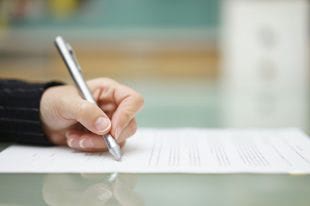Schools reopening Q&A

Yesterday, Monday 11 May, the Department for Education published guidance on the wider opening of nurseries, schools and colleges.
These guidance documents provide detail on a range of areas including what settings can do to help make sure they are safe, information on testing, and details for alternative provision and special schools.
There are a number of key issues which we know parents, sector staff and the media will be interested in. These include the rationale behind the year groups that will return in the first phase, guidance on what protective measures should be in place, and whether or not attendance at a child’s education setting will be compulsory. These issues are addressed below.
Why are certain year groups going back in the first phase?
The rate of infection remains too high to allow the full opening of schools for all pupils yet.
There are three key reasons why nurseries, Reception, Year 1, Year 6, Year 10 and Year 12 are being prioritised.
1. The value that face to face interaction with teachers and education staff provides for young people:
- Children in Reception and Year 1 are at the very beginning of their school career and are mastering the essential basics, including counting and the fundamentals of reading and writing, and learning to socialise with their peers.
- Year 6 children are finishing Key Stage 2 and are preparing for the transition to secondary school, and will benefit immensely from time with their friends and teachers to ensure they are ready.
- Year 10 and 12 pupils have been prioritised because they are preparing for key examinations next year, and are most at risk of falling behind due to time out of school or college.
2. There is high scientific confidence that children of all ages have less severe symptoms than adults if they contract coronavirus and there is moderately high scientific confidence that younger children are less likely to become unwell if infected with coronavirus.
3. Older children are better able to continue learning at home. We know it’s hard for parents and children, but everyone is playing their part in the national effort to combat this virus. There are many innovative ways to learn outside the formal school or college setting, and those who aren’t being asked to return to school or college immediately will continue to be educated remotely.
Priority groups – vulnerable children (including children in need, those with an Education, Health and Care plan and those assessed as otherwise vulnerable by educational providers or local authorities) and the children of critical workers – are also encouraged to attend, if appropriate for them to do so.
Do you expect children to follow social distancing guidelines? If so, how?
We know that, unlike older children and adults, early years and primary age children cannot be expected to remain 2m apart from each other and staff. In deciding to bring more children back to early years and schools, we are taking this into account.
Class sizes will be smaller, creating more space for children and teachers, and children will only mix with their small group. Schools will implement protective measures designed to reduce the risk of transmission, including increasing cleaning and reducing ‘pinch points’ in the school day such as breaktimes, pick-up and drop-off.
We’ve followed the best scientific advice and looked at what other countries are doing when drawing up this guidance.
What protective measures are you asking education settings to take?
Full details of the protective measures schools should implement is available in the guidance, and examples include:
- Making sure children and young people are in the same small groups at all times each day, and different groups are not mixed during the day or on subsequent days;
- increasing the frequency of cleaning, reducing the used of shared items and utilising outdoor space; and
- ensuring all adults and children frequently wash their hands with soap and water, including on arrival at the setting, before and after eating and after sneezing or coughing.
We are working with the sector to provide further guidance to settings.
Do teachers and education staff require PPE?
Wearing a face covering or face mask in schools or other education settings is not recommended. Face coverings may be beneficial for short periods indoors where there is a risk of close social contact with people you do not usually meet and where social distancing and/or other measures cannot be maintained, for example on public transport or in some shops. This does not apply to schools or other education settings.
Information on the very limited instances in which education staff may require PPE is available here.
Will teachers, children and young people have access to testing?
Yes. Staff, children and young people in all settings will be eligible for testing if they begin to display coronavirus symptoms, as will symptomatic members of their households. To access testing parents will be able to use the 111 online coronavirus service if their child is 5 or over. Parents will be able to call 111 if their child is aged under 5.
A negative test will enable children to get back to childcare or education, and their parents to get back to work. Where a setting has a positive case, the rest of their class or group within their childcare or education setting should be sent home and advised to self-isolate for 14 days. As part of the national test and trace programme, if other cases are detected Public Health England will work with settings advise on the appropriate course of action.
This could include a larger number of other children and young people may be asked to self-isolate at home as a precautionary measure – perhaps the whole class, site or year group. Where settings are observing guidance on infection prevention and control, which will reduce risk of transmission, closure of the whole setting will not generally be necessary.
Will parents be fined if they don’t send their children back to school?
No. While we are strongly encouraging children in eligible groups to attend, we will not penalise people for keeping their children at home. Parents will not be fined for non-attendance at this time, and schools and colleges will not be held to account for attendance levels.











Responses